If there is one seasoning blend I absolutely cannot live without, it’s za’atar! This aromatic Middle Eastern blend of herbs, sesame seeds, and sumac will transform your cooking. Not all za’atar is created equal, though. Today, let’s dig into what is za’atar (spice or herb?). What does quality za’atar consist of? And the many delicious ways to use it!
Be sure to grab my list of 11 BEST za’atar recipes below. From amazing salads to the best roast chicken, breakfast, and more!
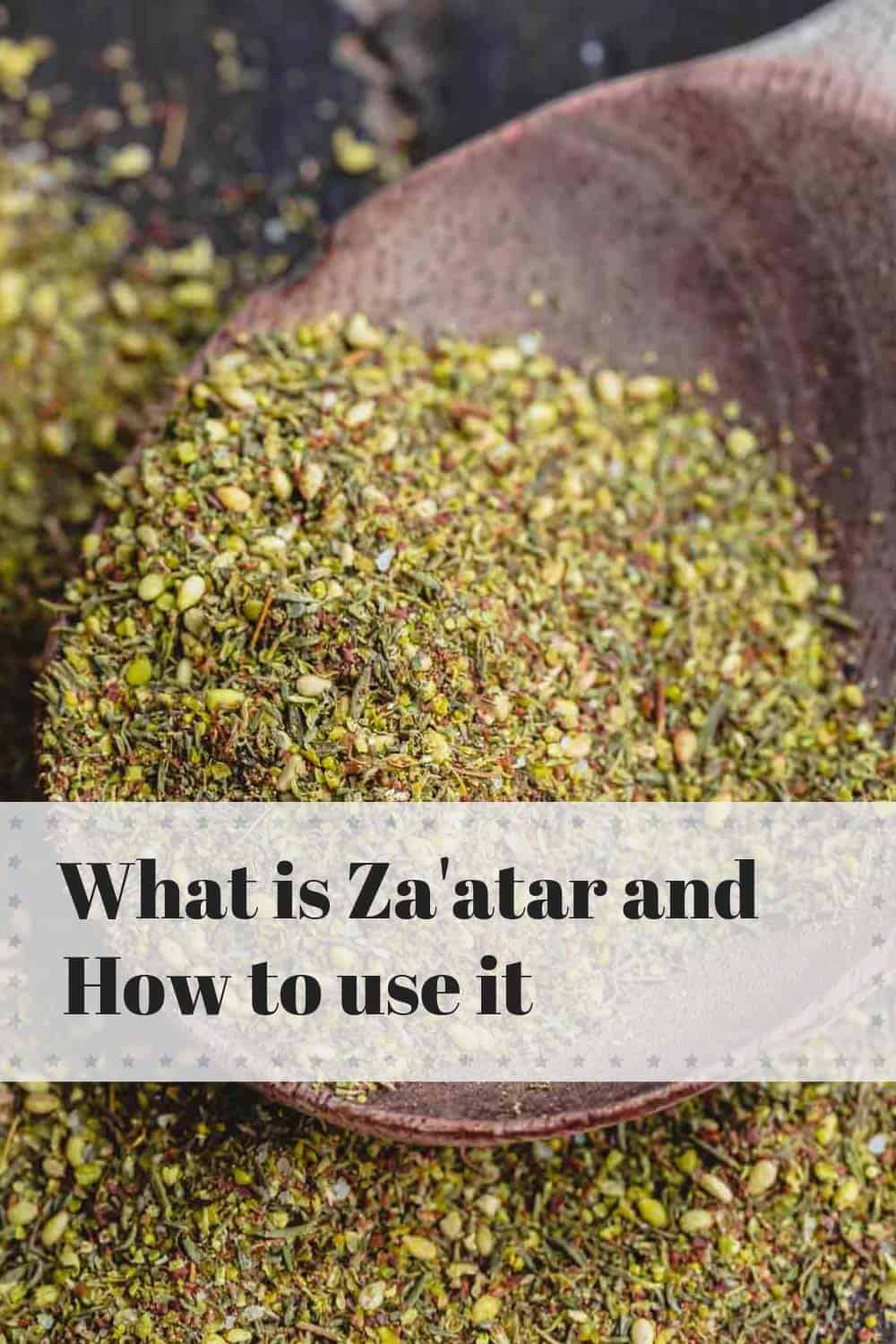
What is za’atar (zaatar)?
I love highlighting my favorite Mediterranean pantry ingredients, like I do in my Aleppo pepper guide. Today, I’m sharing everything you need to know about one of the most-used seasonings in my spice cabinet, za’atar.
Za’atar (pronounced Zaah-tar) is most identified with Middle Eastern and Mediterranean cooking. A combination of herbs, sesame seeds, sumac, and salt, it is one of the world’s unique and best seasonings. It’s loaded with bold flavors, has great texture, and even boasts some health benefits–from soothing inflammation to boosting cognition!
Many don’t know this, but the Arabic word Za’atar (zaatar) also describes an actual herb that’s in the wild thyme family which starts its life looking more like oregano (Blends that stick to the traditional taste will include Mediterranean wild thyme in them.)
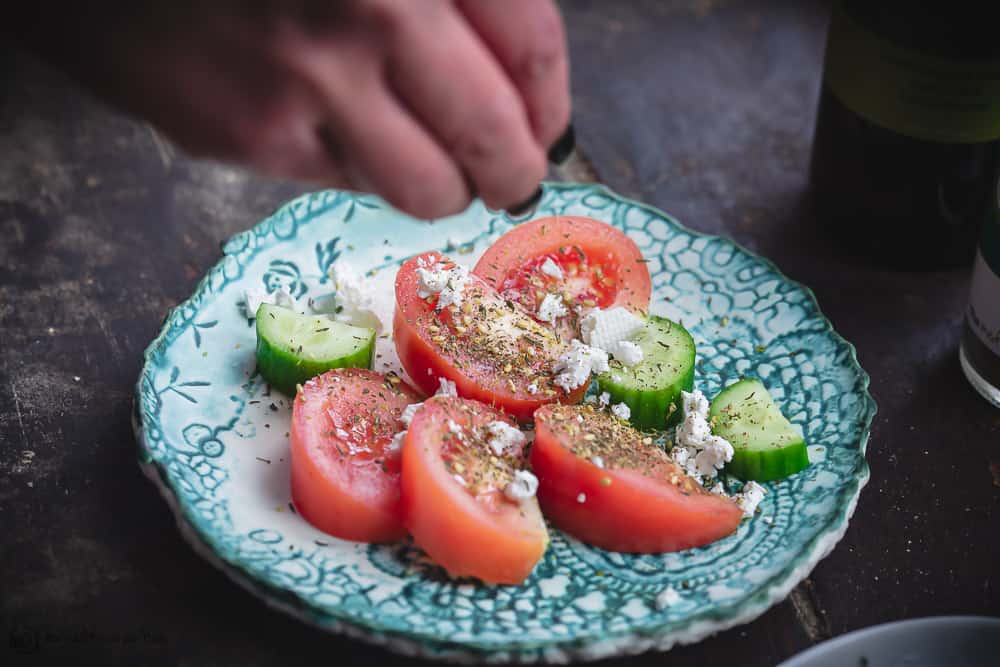
What’s in it? Not all za’atar is created equal
So, we said Zaatar is a combination of herbs, sesame seeds, and sumac (a tangy red spice from sumac berries – get more info about it in our sumac guide!). How much sumac? White or toasted sesame seeds? What else is added?
There are no official standards out there, and that’s why you’ll find different variations of zaatar seasoning on the market.
As someone who’s of Mediterranean origins and who has tried many blends over the years (more than I care to remember), I can tell you, not all za’atar is created equal. Taste, texture, and quality will vary a lot.
Sadly, many blends will not include quality herbs. To increase volume and lower prices, cheaper za’atar blends include a large amount of fillers in the form of wheat, flavored ground straw or husk. And many will substitute citric acid for sumac.
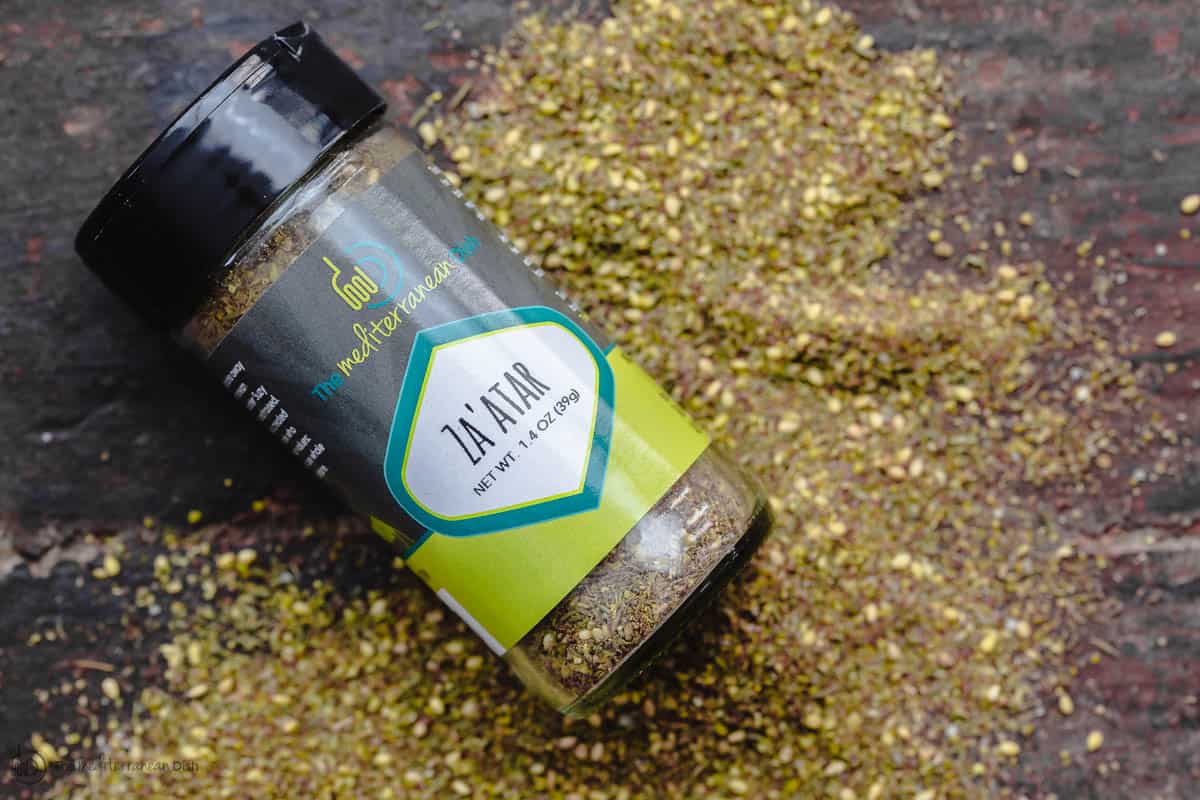
Quality all-natural za’atar seasoning and where to find it
You can find za’atar in the spice section at health food stores or Mediterranean and Middle Eastern grocery stores. My best advice to you is to look at the the label carefully and ask questions. Look for za’atar that contains quality wild thyme (or hyssop) and sumac (not citric acid.)
Make sure the ingredients are all natural and nothing else is added. Look at it carefully, it should have good texture and look more on the green side (like the picture above).
Let me tell you about the blend I use
The Mediterranean Dish za’atar is sourced from trusted suppliers, includes only quality all-natural ingredients, and stays true to traditional taste and texture. An aromatic blend with both earthy and subtle citrus undertones, and just a hint of nuttiness, it includes:
- High quality, fragrant French wild thyme, which adds robust flavor along with oregano.
- Toasted sesame seeds (as opposed to the standard white), which adds a sweet, nutty flavor
- A good amount of quality ground sumac from Mediterranean sumac berries, which adds a subtle lemony and earthy flavor; the perfect balance to the wild thyme and oregano. And a small pinch of kosher salt to round everything out.
Remember, many lower quality zaatar blends substitute citric acid for sumac and add other fillers like wheat and flavored straw to increase volume.
Where to Buy? If you live in the USA, you can find our all-natural za’atar at our online store.
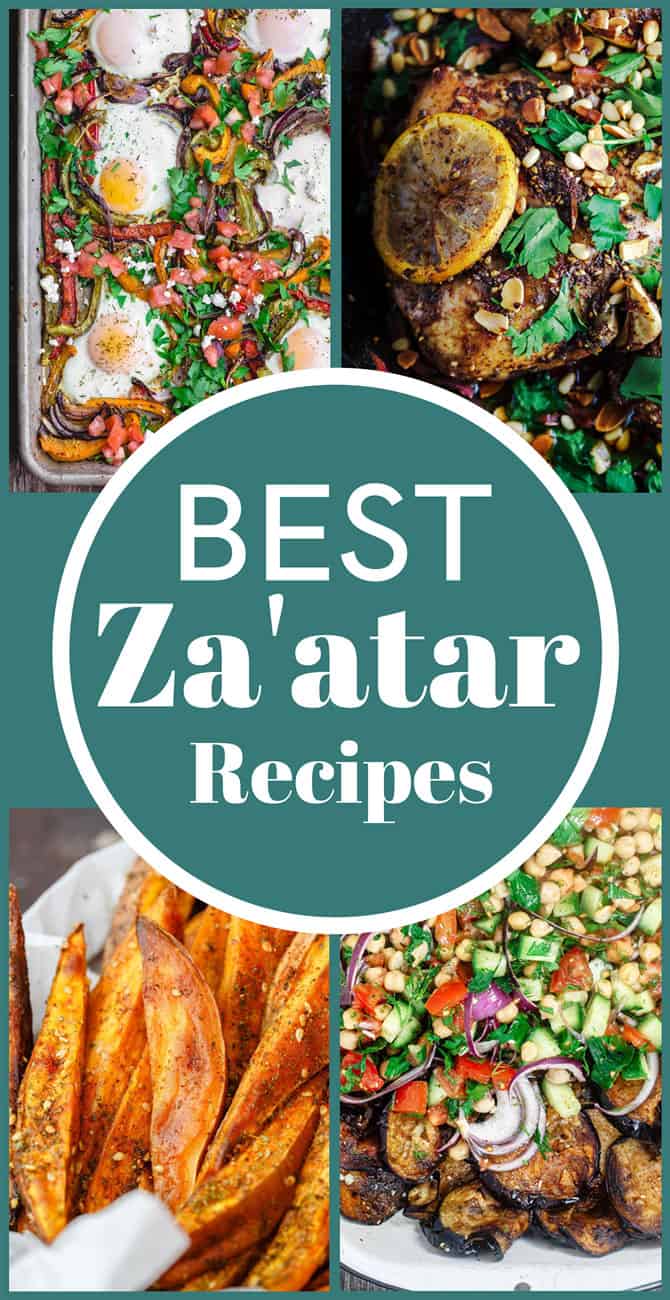
How to use za’atar (zaatar): 13 BEST Za’atar Recipes
I use zaatar on a regular basis. It’s great to simply season some avocados or tomatoes for a snack (drizzle a little extra virgin olive oil), to generously season pillowy homemade bread rolls, to jazz up some breakfast eggs and spinach pasta, or to include with olive oil for dipping as part of a big Mediterranean spread.
But I also use it to season salads, meats and even fish. Here are 13 favorite recipes using za’atar:
- Grilled Eggplant Salad with Za’atar Pita Crisps
- Savory Galette with Summer Veggies and Za’atar
- Za’atar Roasted Chicken
- Chickpea Salad with Eggplants
- Olive Oil Baked Sweet Potato Fries
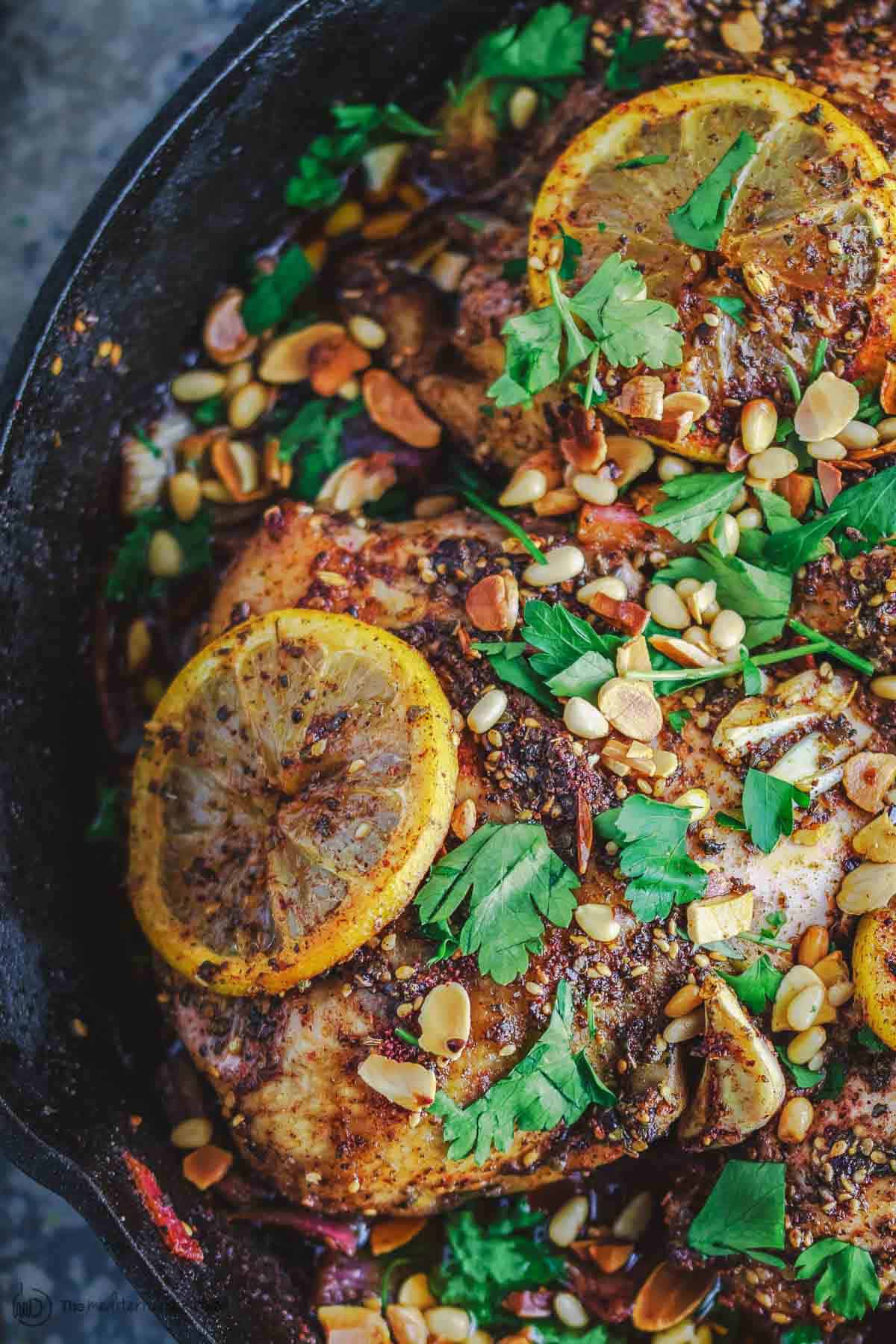
- Mediterranean Sheet Pan Baked Eggs & Veggies
- Za’atar Garlic Salmon and Veggies
- Manaqish (Za’atar Flatbread)
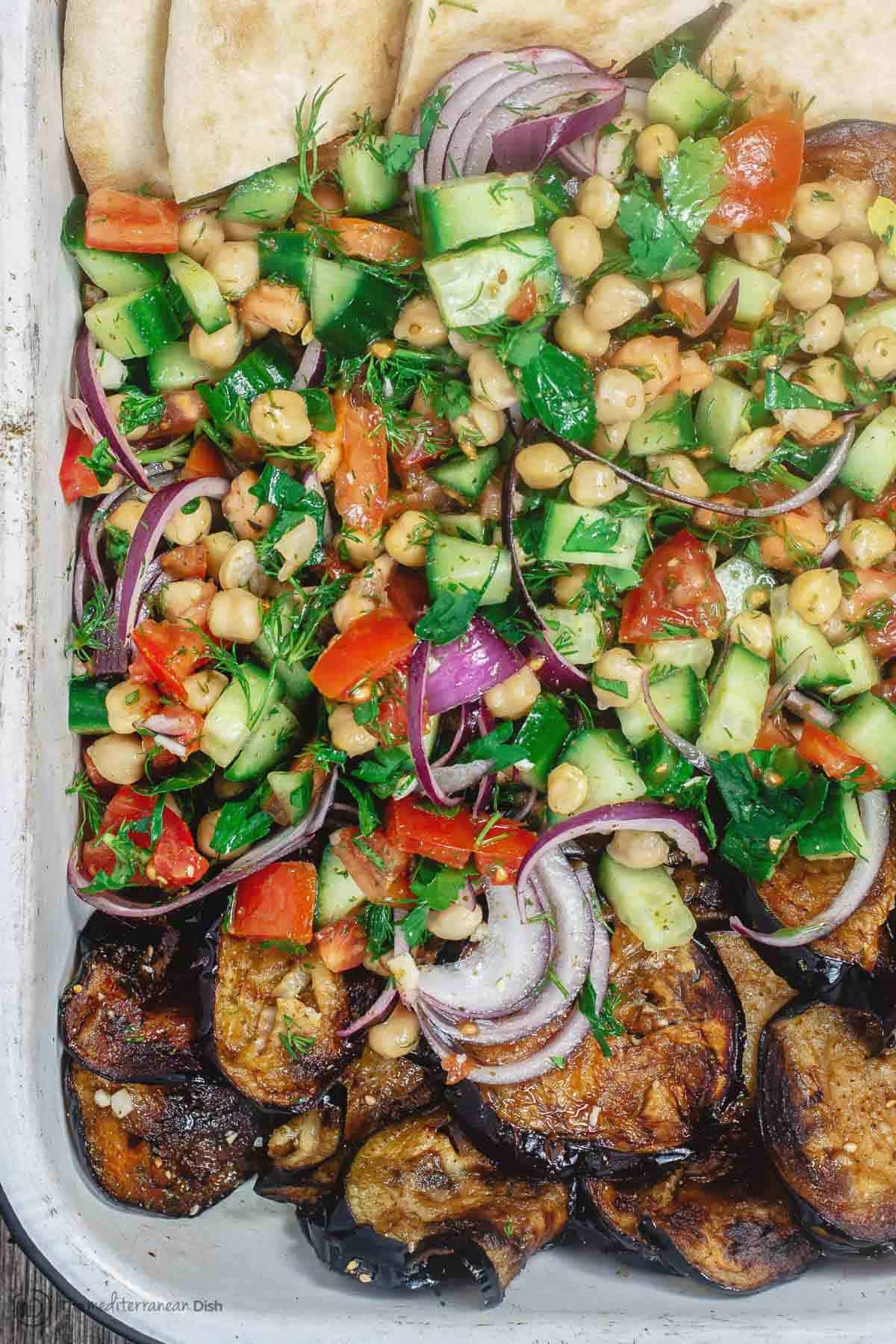
- Mediterranean Avocado Salad
- Mediterranean Sweet Potato Toast
- Mediterranean Breakfast Toast with Hummus
- Mediterranean Flat Bread with Arugula and Smoked Salmon
- Pita Breakfast Pizza with Za’atar
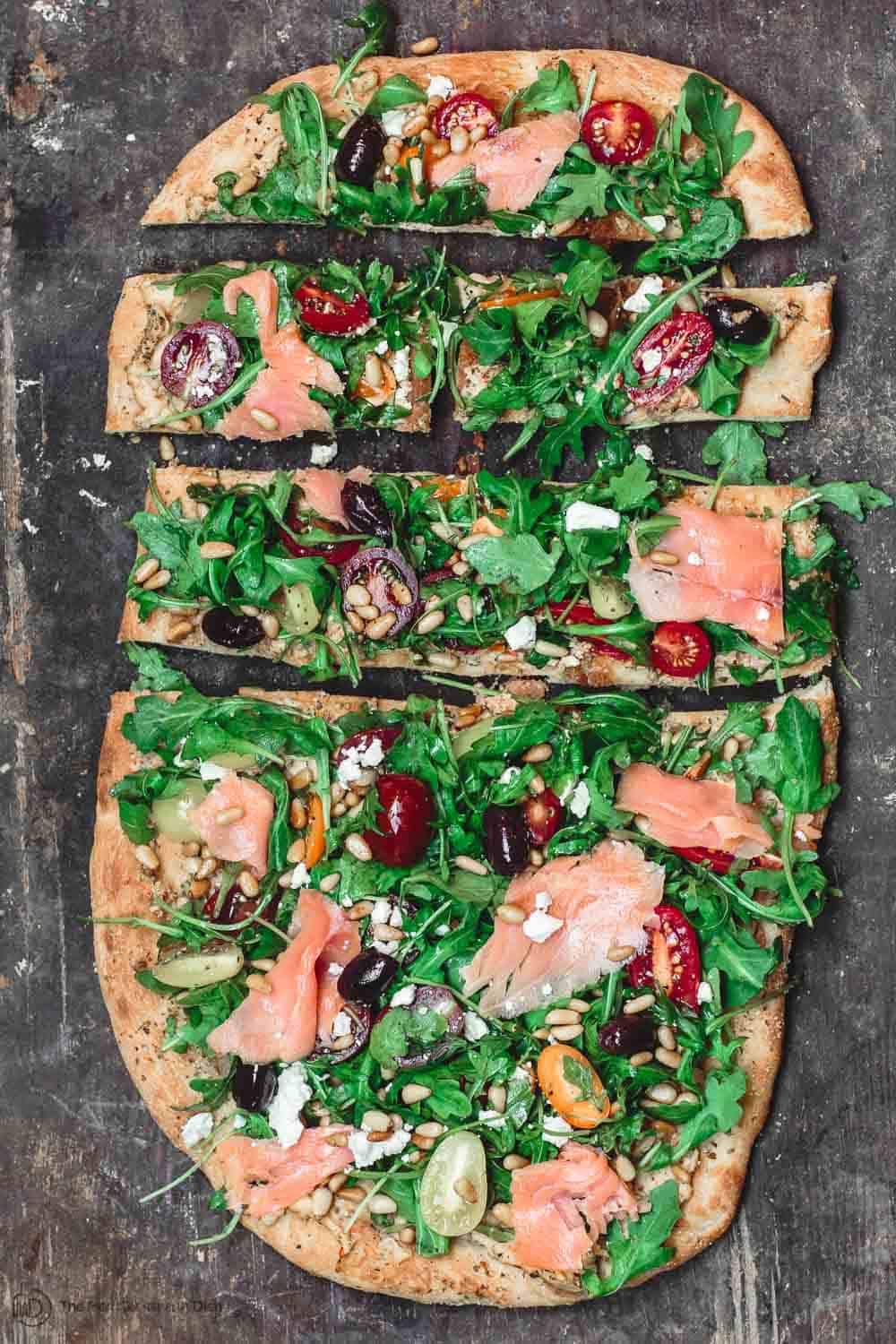
Head over to The Mediterranean Dish Store to grab some today!
Try our Ultimate Mediterranean Spice Bundle Or the Exotic 4 Bundle!
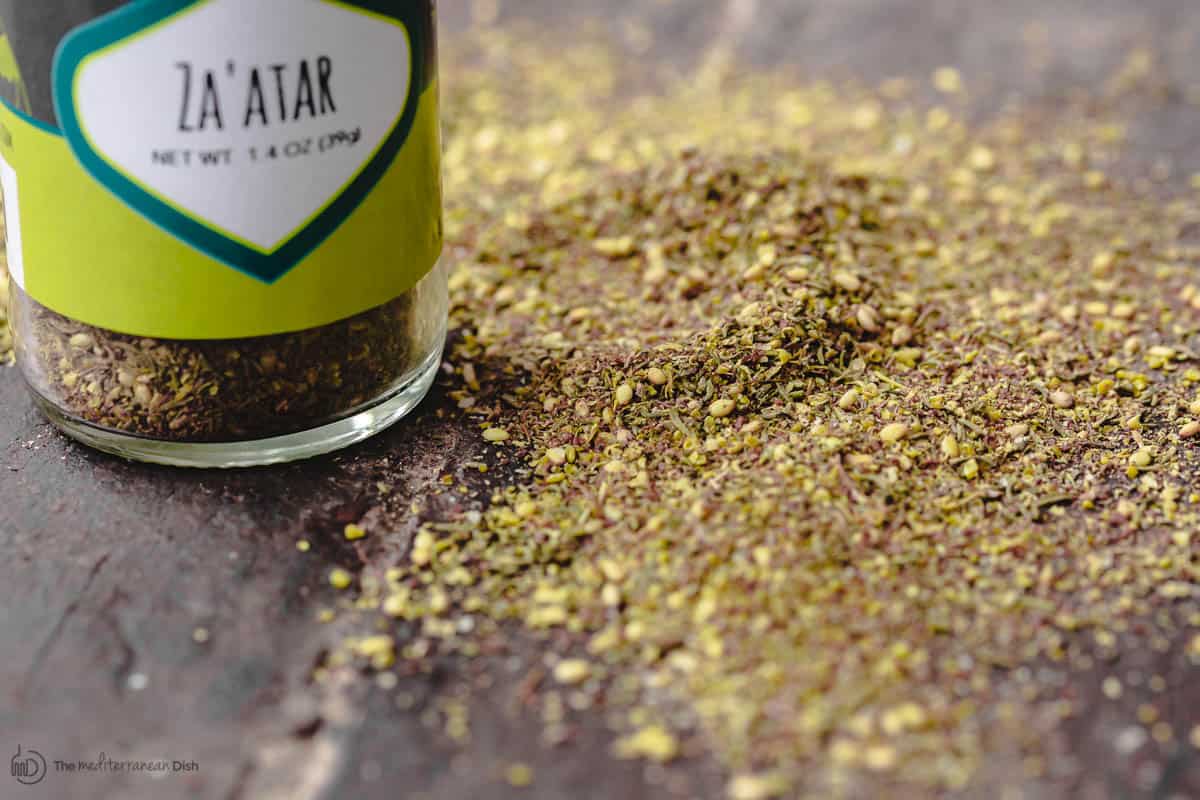
You may also like:
How to make dukkah (Egyptian Dukkah Recipe)

Morning tell me is this zaatar food cooked before consumption?
And tell you can put it in bread for eat it?
Or you can mix it with food .
Inform me because for it is my first time to is it.I am in Africa.
Hi, Moussa. Za’atar is a flavorful mixture of dried seeds, herbs and spices. It has many uses. You can mix with with foods, and it’s also great for sprinkling on top as a finish. Hope you give it a try!!
Absolutely LOVE your philosophy!
Can one ad za’atar to the gravy along with Italian seasonings to make Italian beef sandwiches awesome or put in the Giardinera relish to marinate beforehand
Wheres the recipe?
Hi, Adeel. If you scroll towards the end of the article, you’ll find a section called “How to use Za’atar: 11 BEST Za’atar Recipes” with the links to our favorite Za’atar recipes. Hope you give them all a try!
I’m excited to add new spices to my cooking , and new recipes to expand my
Cooking prowess! My family has always enjoyed Mediterranean leaning recipes, but your website has now opened a whole new avenue of cooking for me. Have added Z’Atar to my spice drawer and next up is Sumac. The sheet pan salmon was a big hit. Thank you, look forward to more great recipes!
All the spices I have used with Suzy’s recipes are great. Even my husband likes the food I have made so far, because of the spices.
Thanks for teaching me about Mediterranean cooking.
You are very welcome, Anna! So honored to have you as part of our community!! Thank you for your support!
Hellie Josha
Thursday 18-01-2024
Can you share your zaatar recipe’s.
I’m from Papua New Guinea and where do I buy this zaatar.
Hello! There are many great za’atar recipes linked right in this post. You can also search for them and more by typing za’atar in the search bar on the site.
Are you able to buy these herbs in England because I haven’t heard of them
Hi Jean, Devin here from the Mediterranean Dish team. We’re still growing our shop – we don’t offer international shipping quite yet but we’re working on it! In the meantime, you may be able to order za’atar online or find it in Middle Eastern markets or specialty grocers in England (depending on where you live). Hope this helps!